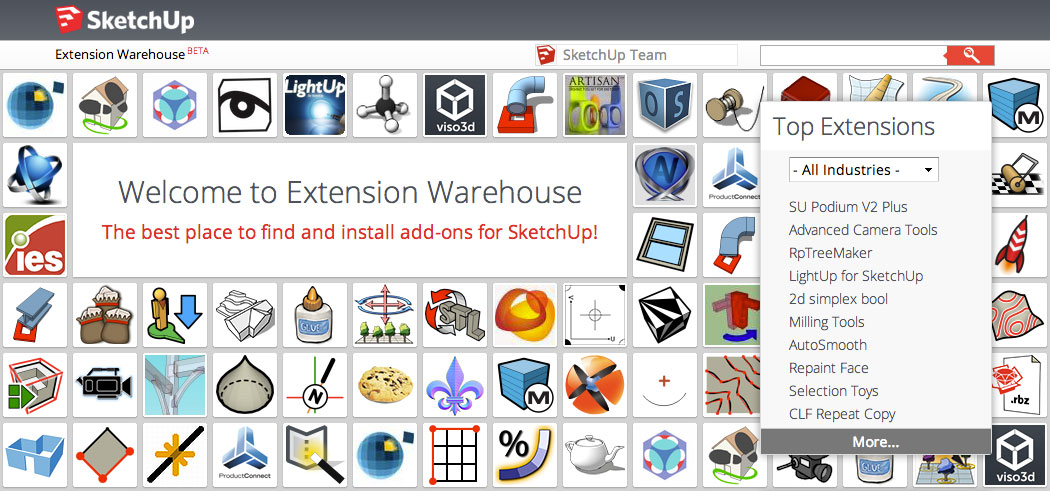

- Sketchup 2017 manual how to#
- Sketchup 2017 manual manuals#
- Sketchup 2017 manual manual#
If you had a custom plugins folder, it will probably show up on this list. If you have the SketchUcation extension store loaded in the old version, you can open up the plugins manager box, and there is a dropdown at the top of the page.
Sketchup 2017 manual manuals#
SketchUp 2017 Pro Reference manuals - SketchUp Community. Try doing a search on your C: drive for a plugin that you know the name of and see if the folder shows up this way. SketchUp Tutorial 14 Exporting an STL SketchUp does not by default support importing/exporting.

If you don’t see them, you may have set a custom plugin location folder, and you’ll have to find where that is.

Take a look in this folder and make sure the contents make sense – you should see most of the extensions you used in 2017 version in this folder. The first thing you’re going to need to do is find the plugins folder that contains all the files that you want to transfer.įor SketchUp 2017, the default plugin folder wasĬ:\Users\Your_User_Name\AppData\Roaming\SketchUp\SketchUp 2017\SketchUp\Plugins Transferring files from SketchUp 2017 to SketchUp 2018 It wouldn’t be fun to accidentally lose those files.
The second is that you need to CREATE A BACKUP of any files you’re moving around. While this should not cause any problems, DO SO AT YOUR OWN RISK. The first is that you’re moving files around in your app data folder. Installing your extensions manually can be a long process, but this can be a good workaround. Sketchup 2017 manual how to#
In this video, we’re going to talk about how to move your SketchUp extensions from SketchUp 2017 to SketchUp 2018! This is especially useful when SketchUp rolls out a new version, like they just did with SketchUp 2018. Moving your plugins and extensions from SketchUp 2017 to SketchUp 2018 – THE EASY WAY! If so, please consider supporting me on Patreon (click here to support)! By default, this option is deselected.Move Plugins and Extensions from SketchUp 2017 to SketchUp 2018 – THE EASY WAY TO REINSTALL PLUGINSĭo you like these SketchUp tutorials and videos?
The From Edges checkbox controls whether edges that are not associated with a face cast a shadow. When the On Ground checkbox is selected, your geometry can cast shadows on the ground plane. This feature gobbles up your graphics card’s processing power, so you might try deselecting this option if you want to display shadows but the feature is causing a performance problem. The On Faces checkbox enables faces to cast shadows on other faces. When the Use Sun for Shading checkbox is selected, SketchUp’s simulated sun shades parts of your model even if shadows are toggled off. With this option, you can lighten or darken areas under shade or shadows. The Dark slider controls the shadow’s intensity. This option effectively lightens and darkens illuminated surfaces. The Light slider controls the light’s intensity. If your model is geolocated, this time zone should be accurate, but you can check that it’s correct or change it if you like. The Time Zone drop-down list enables you to choose a new time zone. The Display Shadows button in the upper left toggles the shadow display on and off. 
(bottom).īeyond the basic shadow settings outlined in the preceding steps list, you can customize a few more shadow attributes in the Shadow Settings dialog box: SketchUp Render Extension to create detailed 3d renders of your SketchUp models in just one click. In the following figure, you see the how the shadows change from 7:00 a.m.
To select a month and day, drag the Date slider or enter a date in the Date box. So, you might consider these simple tips to easily improve your SketchUp skills. However, as work starts to get a bit more complicated, these simple tools might become a hindrance. Its tools and interface are simple and easy to deal with for beginners. To select the time of day, drag the Time slider along the timeline or enter a time in the Time box. SketchUp is one of the easiest, fastest, and most popular 3D modeling software. (Alternately, you can display the Shadows toolbar Customizing Your Workspace explains how to show and hide toolbars.) Select Window > Shadows to open the Shadow Settings dialog box Open the Shadows panel in the Default Tray, where you can control how the shadows appear. To turn on shadows and see shadows at different times of day, follow these steps: After you model is geolocated, SketchUp knows (roughly) how the sun will shine on your model.īy default, shadows are turned off, because they can use a lot of your computer’s processing ability. Sketchup 2017 manual manual#
Or to add a location manually in any version of SketchUp, select Window > Model Info, select the Geo-location option in the sidebar on the left, click Set Manual Location, and enter a latitude and longitude in the dialog box that appears. To geolocate your model in SketchUp Pro 2017, you can import terrain using the Add Location tool. Tip: Before you can cast real-world shadows in a model, your model must be geolocated.








 0 kommentar(er)
0 kommentar(er)
